It all started with a simple question I couldn’t readily answer as a DP: “What color is this light?”
It seems like an easy enough question but the problem is we really are putting a lot of faith in true unknowns. Even “what color is sunlight?” is deceptive. 5600K right? Not always. Tungsten, 3200K? Not always. LEDs are a bigger issue, if you input “5600K”, is that what you’re actually getting out of the other end? And then there’s spectral quality, as in: if a given source actually puts out a full enough color spectrum to render your subject accurately. How do you test any of this? Well, the answer is a color meter.

I had to have one. I needed to know these simple unknowns. I hated guessing when it’s so easy not to need to. I got one and promptly started metering every light source I could possibly find. Every bulb, every window, every reflected surface, just to get a better understanding of what color temperatures I actually was dealing with on any given day. I wrote an article about common LED bulb accuracy, which made me consider the natural follow-up question: how accurate are LED panels designed for film work?
I went to Filmtools and metered every light in the showroom and the results were kind of shocking. Some lights are more accurate than others based on what you input, some have larger spectral outputs than others, but most are decent. In general, I found that pretty much every “cine” light available is “good enough”, but you’d still want a color meter to make sure you’re actually getting the temperature you want, versus trusting the display.
One shocking thing I discovered is that the “non-X” Arri Skypanel, the industry standard LED panel, was only middling in overall performance (see charts below). You generally got the Kelvin you dialed in within double digits, but the spectral output was “okay” at best (at least comparatively, again they’re all pretty decent). On the flipside, Kino Flo was very impressive (charts further down) and far outperformed most of the competition, from Arri to Apurture, Litepanel to Litemat. And that leads us to this article.
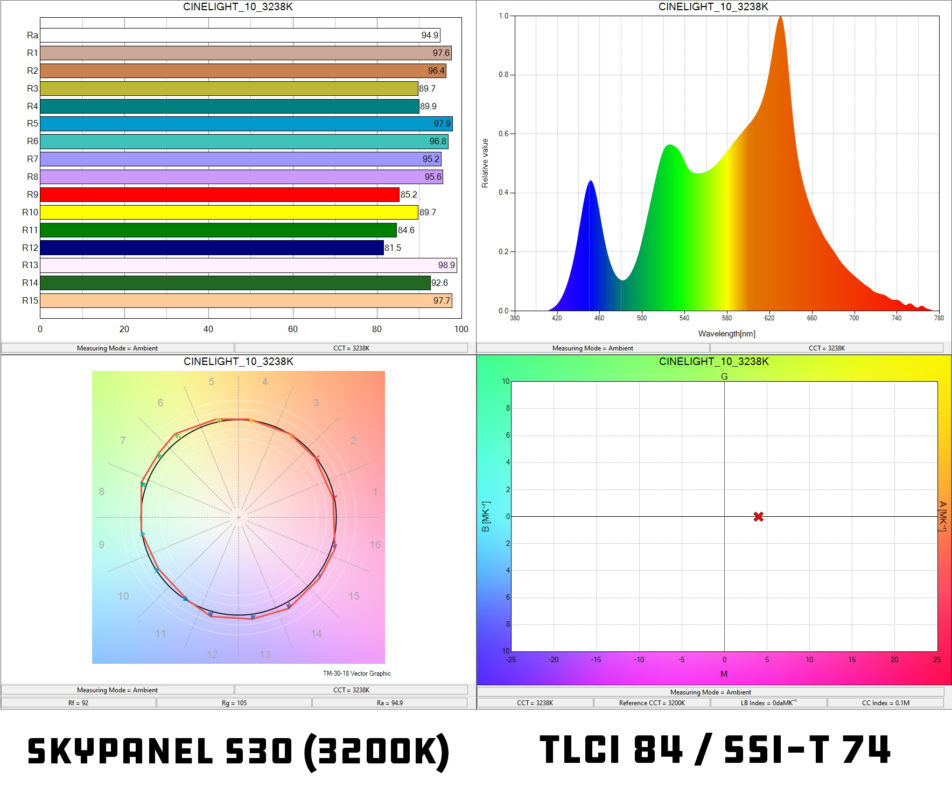
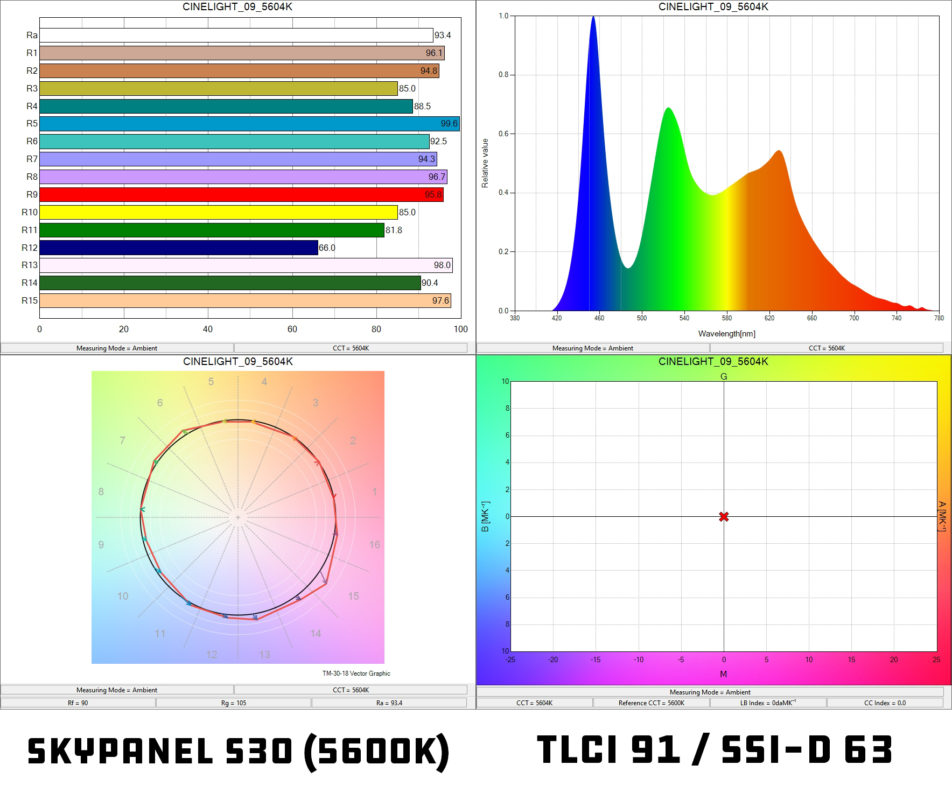
I had never owned an LED panel, instead opting for more affordable COB bowens-style fixtures with fixed color temperatures for the majority of the simple work I tend to get, renting when I’m on a gig with more “robust” needs. Even so, I was only really in the market for a nicer variable temperature COB as opposed to a full panel as that was the only real upgrade I really needed. Once I had the color meter it was hard to just throw up a 5600K light in an interview situation, for instance, knowing it didn’t match the light coming in the window exactly. Why be sloppy if you don’t have to be? I can’t say I was “actively” searching for a new light, but offerings like the Hive Hornet were always on my radar. That was until Kino advertised a trade-in program a year or so ago.
You see, I have always owned a 2-fixture traditional Kino Flo kit which has served me quite well in the past 8 years. The quality of light (both spectrally and visually) was fantastic, I had plenty of extra bulbs for them, the whole kit was relatively lightweight, and I was renting them out quite often (prior to LEDs becoming the norm, at least). Obviously when I got the color meter I checked out what kind of temps I would get with all the various combinations of bulbs, and that was pretty useful but obviously a little imprecise. Really the only issue was they were a bit large for certain gigs and bulbs are fragile, although I never broke one. Long story short, I saw the trade-in program, saw it was a really incredible deal, and pulled the trigger on a new Diva 20 kit.
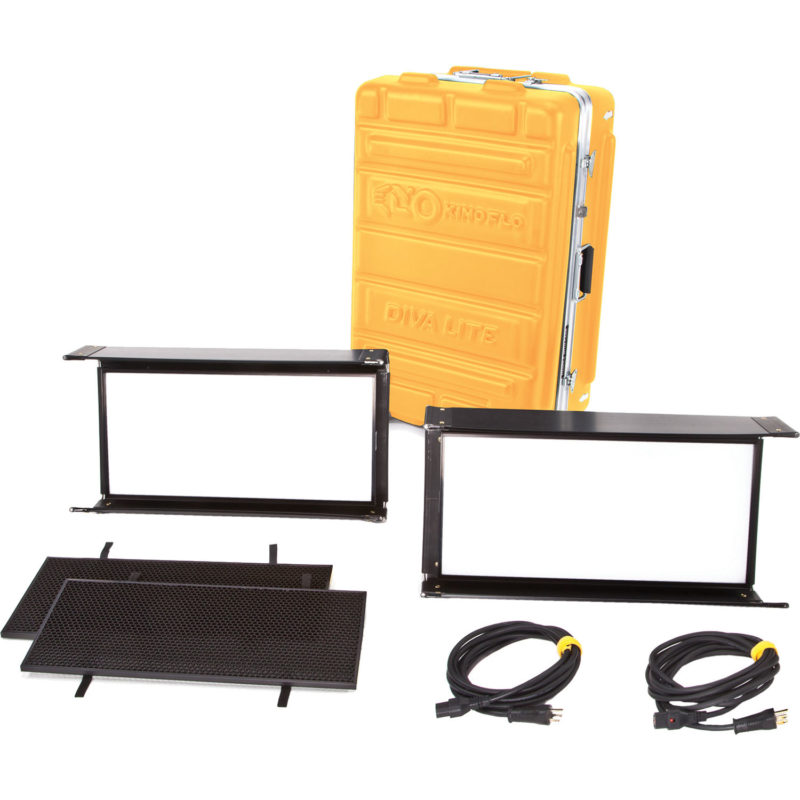
Going over the fixtures from “tip to butt”, I really like the subtle advances Kino has made to their whole package. The flight case I got was basically identical to my old one except in bright yellow (hard to lose at least) and the fixtures themselves were just as light as before as far as I could feel. Said fixtures are essentially the same as the old bulb-having ones, except with the obvious difference in light emitter. The one change I do enjoy however is the change in yolk, or lollipop, or whatever you want to call it. Before, there was this kind of long ratchet handle that you’d twist, pull out, push in, twist, repeat and you’d kinda hit the back of the fixture and I wasn’t crazy about it. Now it’s a nice little butterfly nut of sorts and it’s smooth sailing. The barn doors also feel a lot stronger than the old bulbies and I much prefer the new handle they’ve added to the whole situation that makes moving and adjusting the things a breeze.
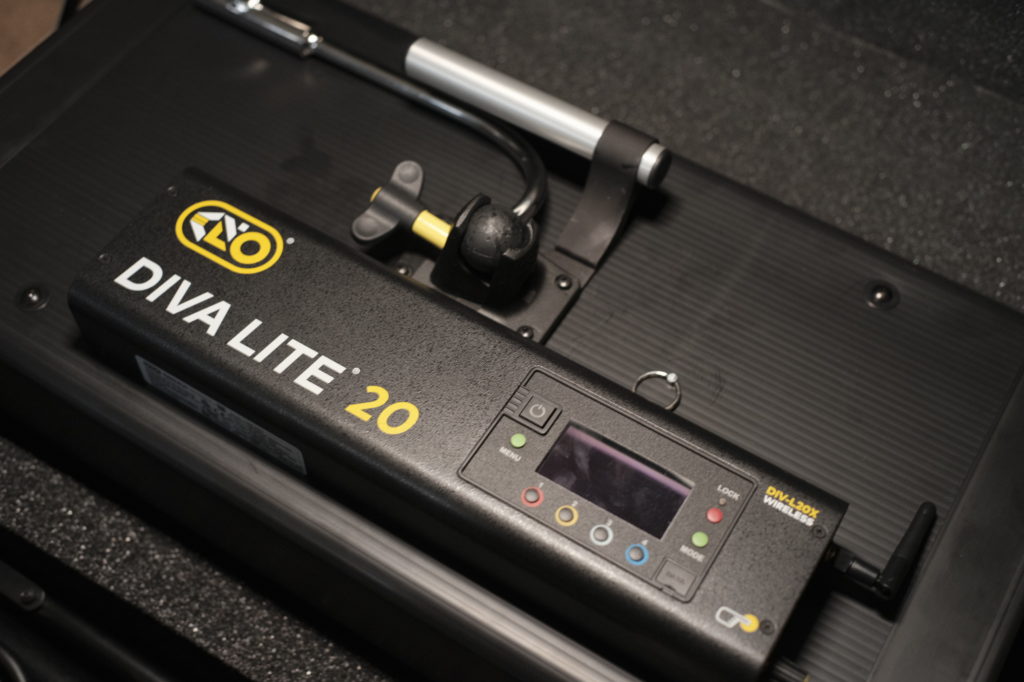
The ballast, as before, is built on to the back of the unit and doesn’t appear to have a fan but runs silently in every condition I’ve used it in thus far. On said ballast are all your controls with a knob to twist between values (0.1 step increments!) and menus, which you can push in to toggle between “gross” and fine adjustments. Besides the Menu and Mode buttons you’ve got a Lock button and 4 preset buttons that default to 2700K, 3200K, 5000K, and 6500K. If you want, you can set the light to whatever you want and hold one of those buttons to save it as a preset which is very handy, and if you want to reset those you can just hold the “lock” button for 3 seconds. You can also hit the power button for blackout, which has a variety of uses.
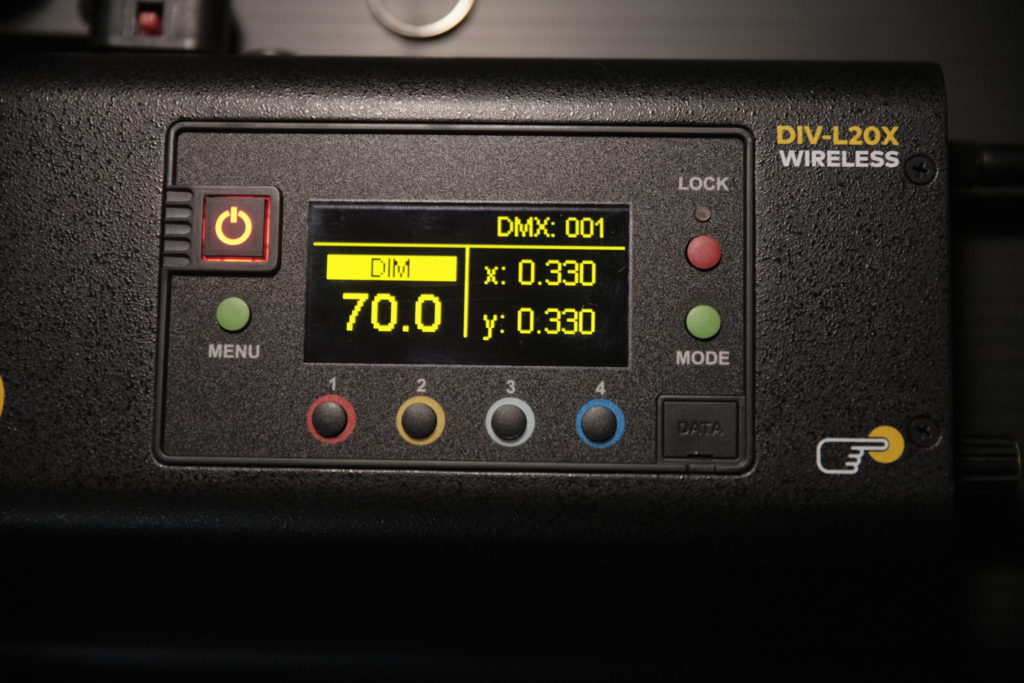
In terms of ergonomics, the Diva 20 is a touch smaller than the Skypanel S60 panel-wise, but is a touch less than half the weight and quite a bit thinner. If you were to get one of the other Kino Flo offerings, such as the Freestyle, the ballast is separate from the unit but on these Divas it’s stuck there on the back. Luckily it’s quite small.
You’ve got the standard modes here: CCT, RGB, GEL/HueSat, and my favorite: X/Y (seen above). There’s also your usual Fire/Cop Car/Strobe/Etc FX modes but I honestly rarely use those. They’re there though.
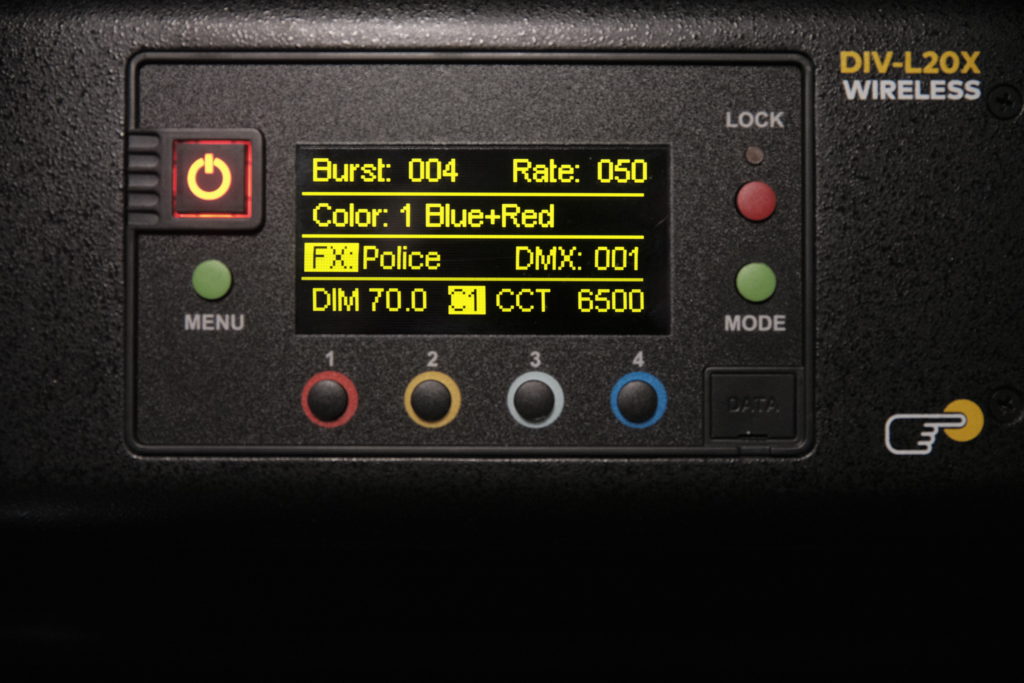
CCT is what you’d expect: you put in a value, you get a value. I found this to only be a couple kelvin off, 100 at the worst, (hence why a color meter is great: so you can get the “right” output regardless of what the LCD says) so that’s lovely. The GELs are what you’d expect but have a nice feature where they go over the set color temperature so it’s not just a color, it behaves like it would when put on a traditional light, and you can dial how much of that gel you want mixed with the white light. The Diva’s also have a consistent output across the CCT range so you don’t run into that problem where the output changes when the LEDs start mixing which is greatly appreciated, and the temperature doesn’t shift when you adjust output. Fantastic. You also can adjust Tint between 0-100, where 25 is ¼, 50 is ½ etc. Tint values seem to have absolutely zero standardization across products or software so it’s nice to see a more traditional “gel based” system here with more granularity.
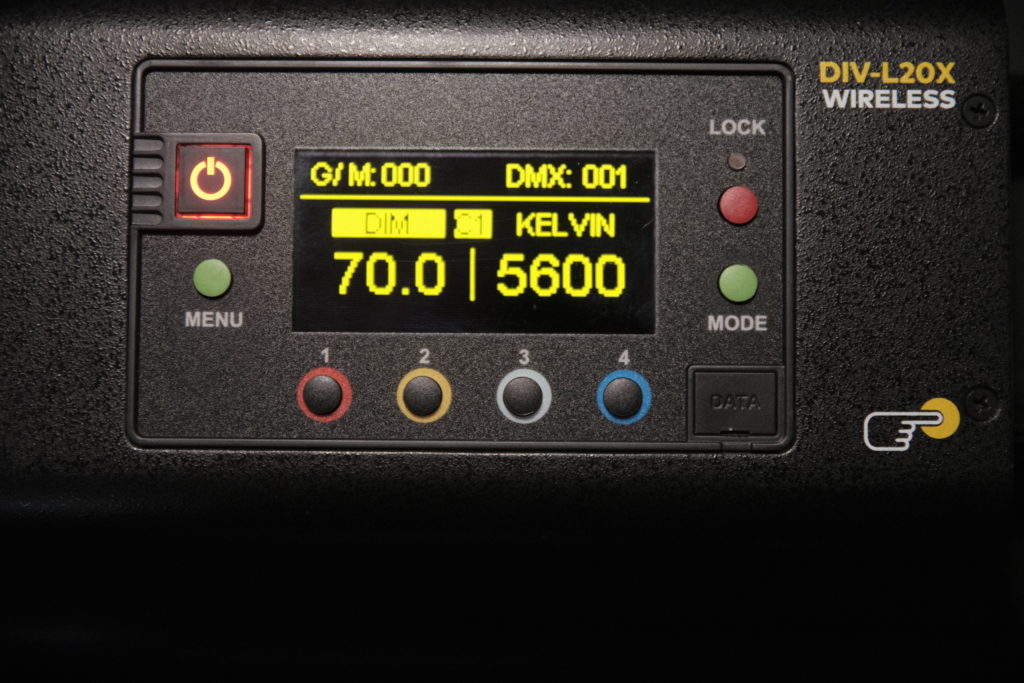
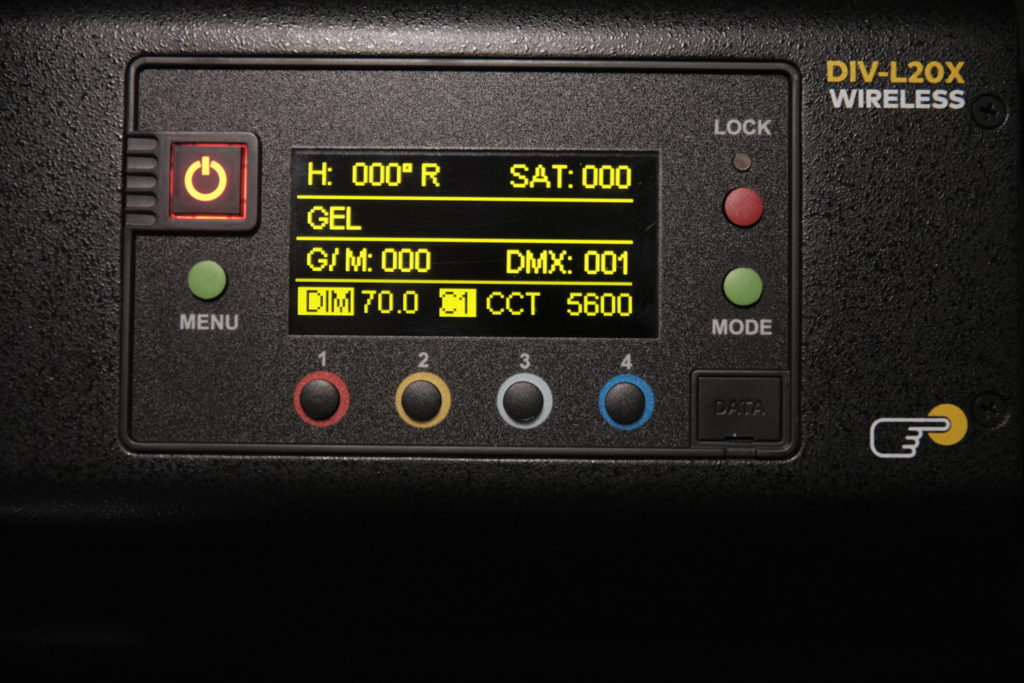
RGB is as it sounds, where you put in those values and get that color. Easy enough. This is great for a number of reasons, for instance if a brand you’re shooting with wants to incorporate their color into the shot, maybe behind an interviewee, you can simply get their brand guidelines, find said color, and pop it up on the wall and be content knowing it’s exactly the right shade of whatever it may be. You could also use a color picker app, take a photo of whatever you’re trying to match (a wall or decoration color maybe) and then pop those RGB values in there to get a match. Love it.
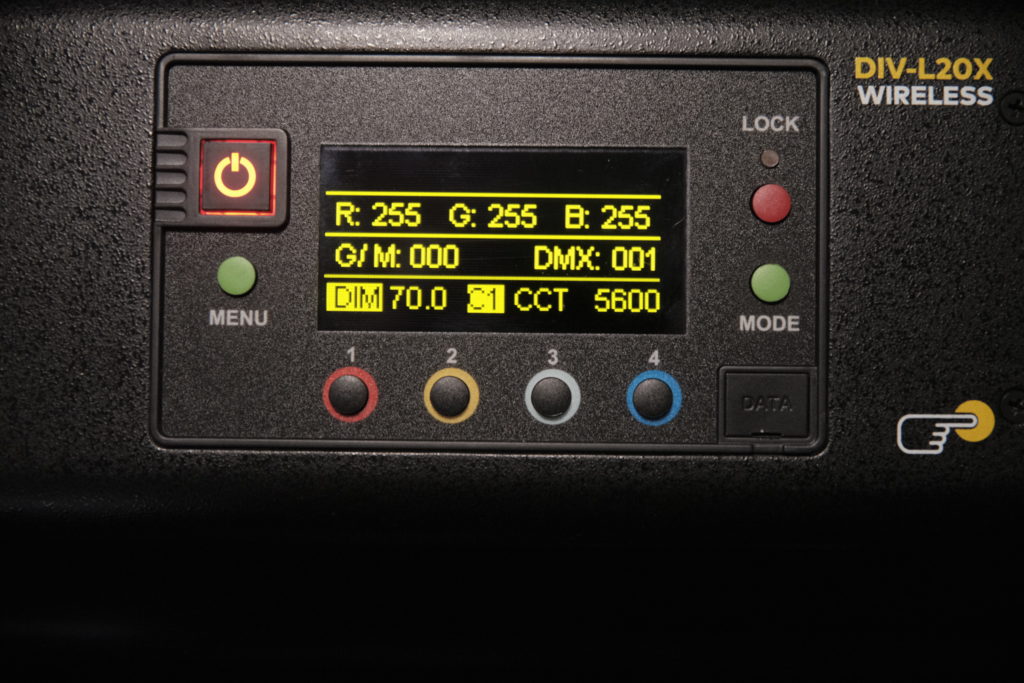
X/Y is my favorite and I basically don’t want to use lights without it now. It’s too good. It’s one thing to measure the color temperature of, say, the sunlight coming through the window or existing lights in a room and use that Kelvin value, but those things are never “pure CCT”. Bulbs fail, skew certain ways, and the light coming through that window is mixed with all kinds of bounce from other buildings, trees and grass, the sky, whatever. X/Y allows you to get the exact color of light coming through that window and now your additional light is perfectly blended in and looks like it wasn’t even there. It’s so distracting, at least for me, to see a key light. Do you know what I mean? Like, your actors are sitting there by a window and you can clearly see the light that’s lighting them is “cleaner” than the ambient light in the diner or wherever they are. Every DP will tell you the best compliment is when people think you haven’t lit the thing at all and a quick giveaway, aside from getting your exposure wrong, is getting the color wrong. Now you can be sure it’ll be absolutely seamless and I’m telling you, the production value goes way up when you can get things looking that natural. It’s a little thing but for me at least it’s that extra 10% that has made my images look so much better.
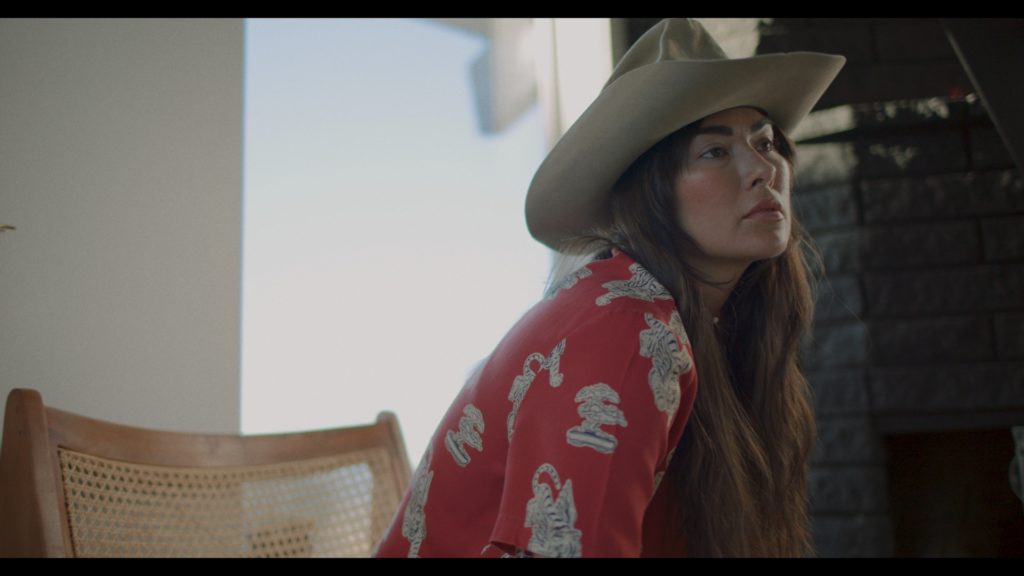
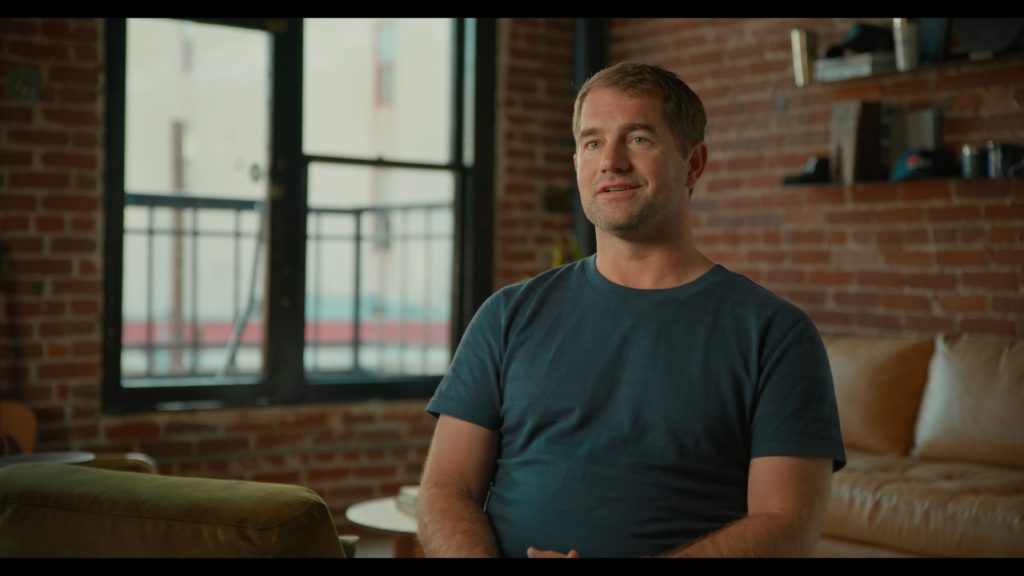
Two other features that I don’t think exist in other lights are the Camera LUTs and Color Gamut settings. Essentially, you can tell the light what color space you’re in, what camera you’re shooting on, and it won’t create colors outside of that gamut on top of adjusting the colors so they match what the camera is “expecting” the light to be at any given value. This is just one more thing that is a small but powerful method of making sure your light is as accurate as possible. No one likes filming an out of gamut color and having it clip out (looking at you break lights). The Camera LUTs available at the moment are Alexa, Venice, DXL, and Varicam, and the Color Spaces are Rec709/RGB, P3 D65, and Rec2020. The camera selection is minimal, but as Kino Flo seems to update their TrueMatch firmware relatively often, we may see more cameras added in the future. I’d love to see my Canon C500mkII get some love.
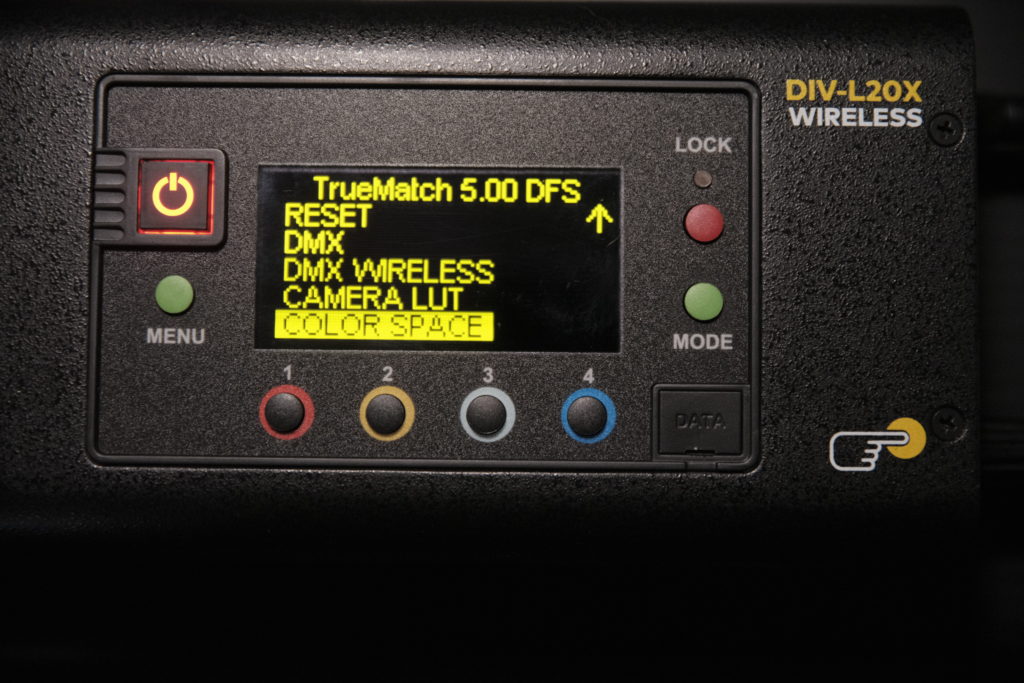
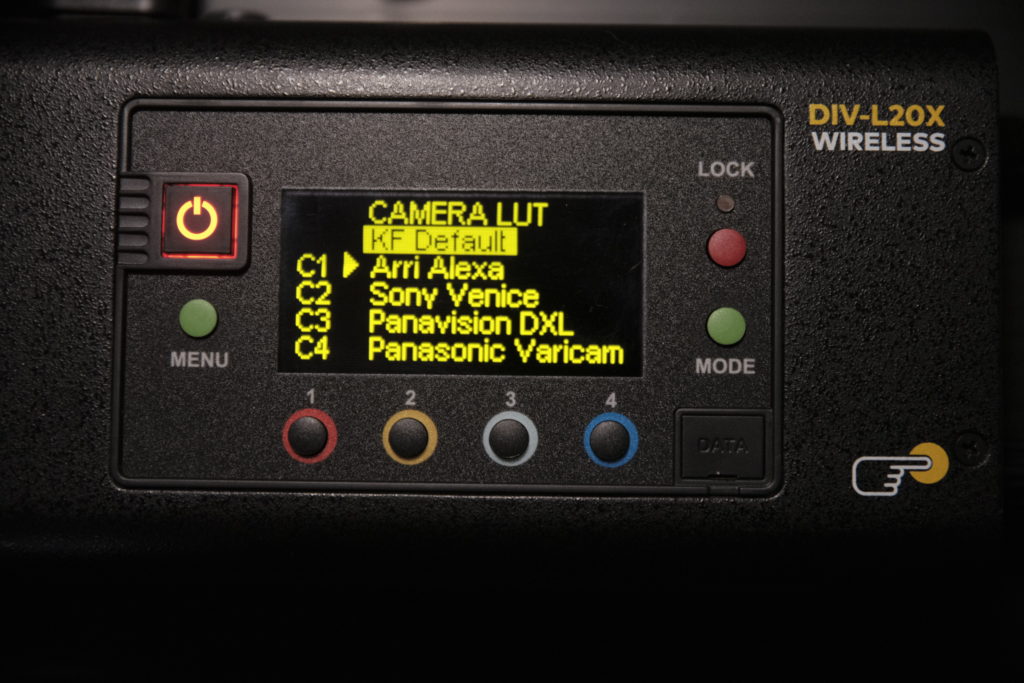
The “final” feature that is always welcomed is the inclusion of Wireless DMX (Lumenradio) as well as the standard XLR DMX port. For smaller productions or indie creators that may not be a huge thing but as we’ve mentioned on Frame & Reference numerous times, the dimmer board operators are the unsung heroes of the camera department, bumping up that production value to 11, but even on simpler gigs being able to set your light up and make your adjustments from an iPad instead of going up and down a ladder or pulling the unit back down to use the on-board controls is just *chefs kiss*.
A wonderful thing about all of this is that Kino Flo uses this tech, these LEDs, across all of their products. So technically this isn’t solely a review of the Diva 20s but all of the panels they make as they all behave the same; the only difference is the size and configuration which you can choose based on your needs. Check out these readings!
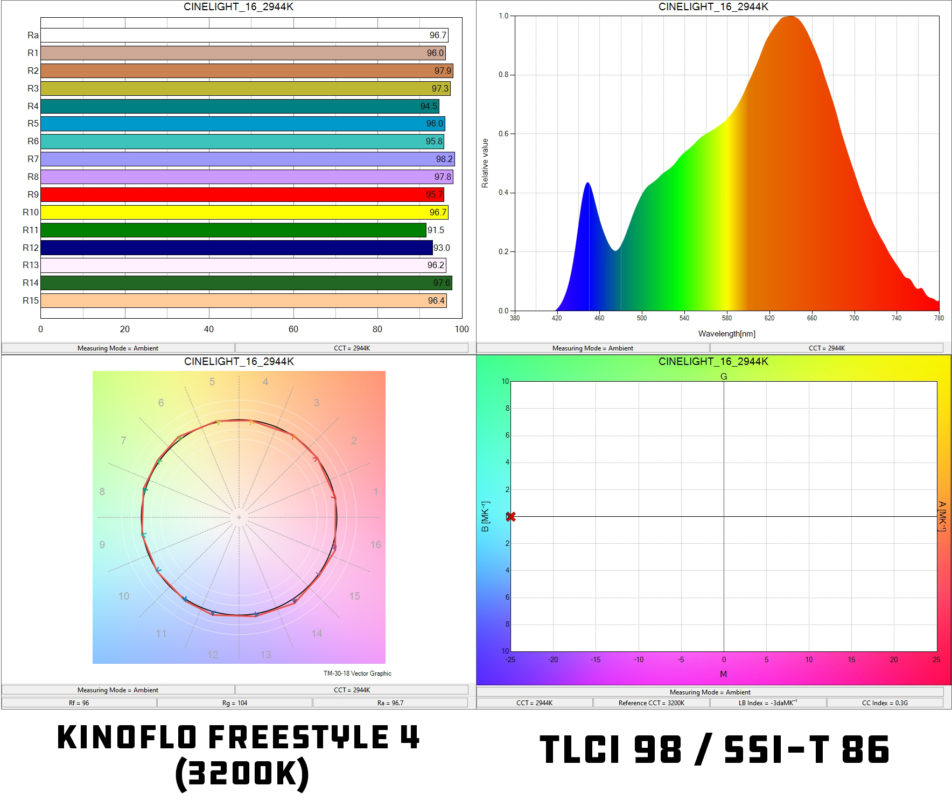
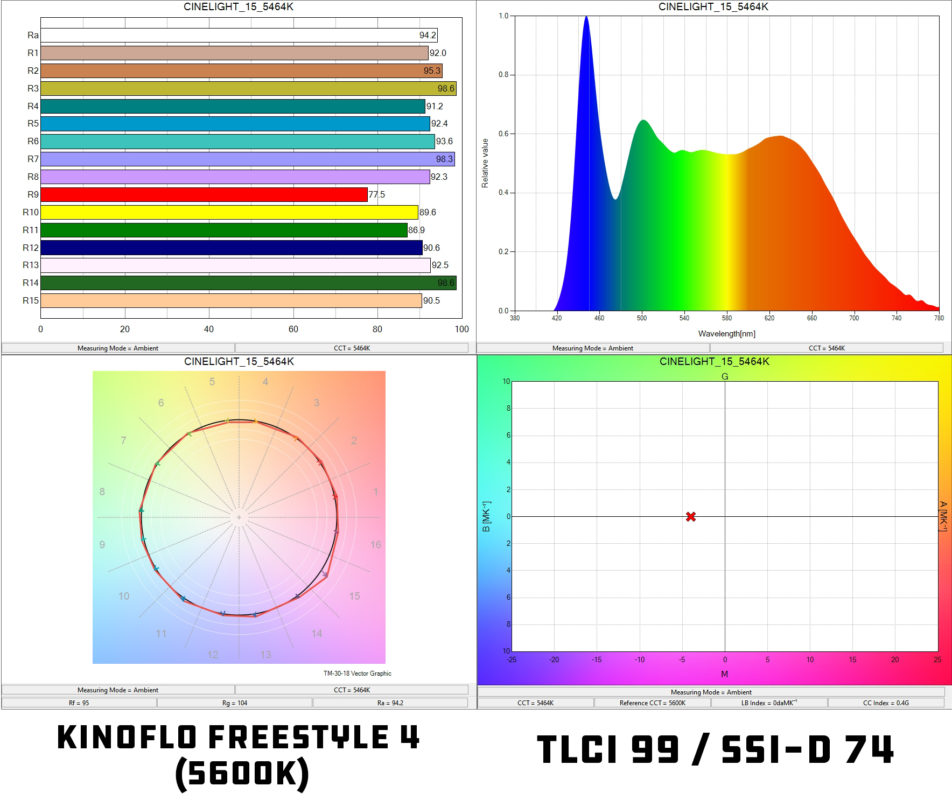
Something not so wonderful but not a dealbreaker by any means is the raw output/photometrics: these aren’t the brightest lights in the world. They may be more accurate than the Skypanel but the Skypanel does throw a lot more light out of the front of the panel. At 8′ the S60 will give you 177fc whereas the Diva 20 will give you appreciably less at 40fc. Again, this isn’t a deal breaker but for certain situations you’ll obviously need that extra power. That being said the Diva 20 only draws 150W of power whereas the S60 pulls around 420W so, that’s something. Unfortunately I can’t see a Kino Flo product that has that extra oomph except for the recently-discontinued Celeb 850 (an enormous 3.75’x2′ light) which does get you 171fc at 8′, but hey… small price to pay for excellence. The Image 80 can get you to 143fc but that’s kind of a studio-specific fixture. Maybe in the future we’ll get a fresnel-style light that’ll be able to get us that extra kick when necessary.
Another thing I don’t necessarily love but isn’t the end of the world is the placement of the power cable. It goes “up” out of the top of the ballast, so it’s a little bit awkward when the light’s on a stand. I’d prefer it come out of the bottom so you’re not “losing” that length of cable. I’m not sure why this is the case (maybe for grid use?) but I assume Kino has a reason. One nice thing the cable does have is a little red locking pin on it so it can’t accidently get removed and you get a nice “click” when you plug it in properly. Again, not the worst thing, but one sticking point I’ve noticed over the past year and some change of using these lights.
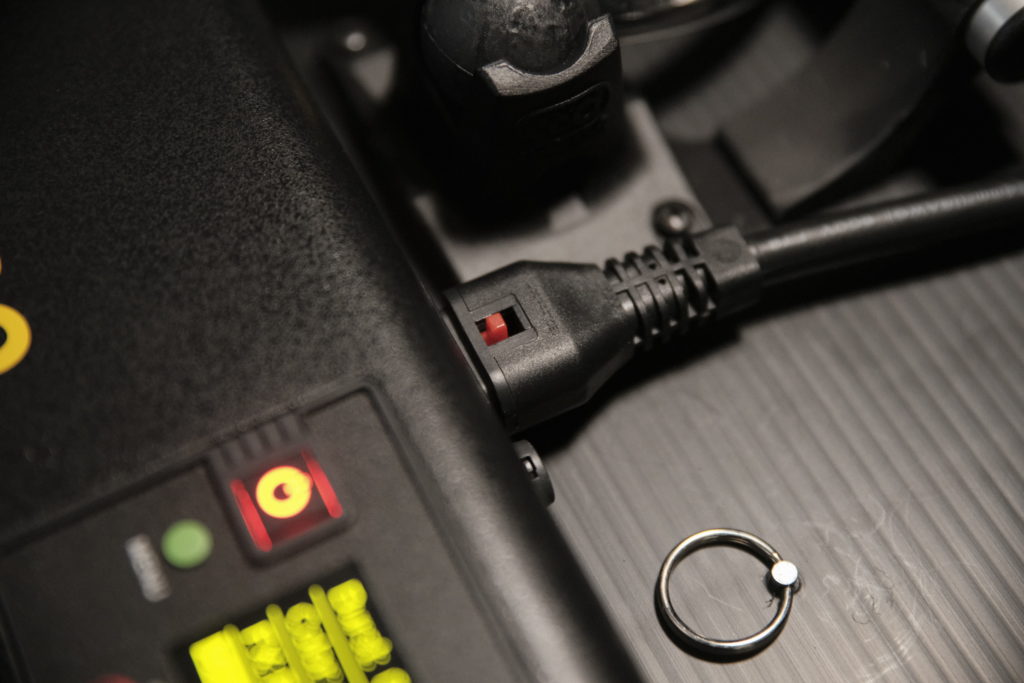
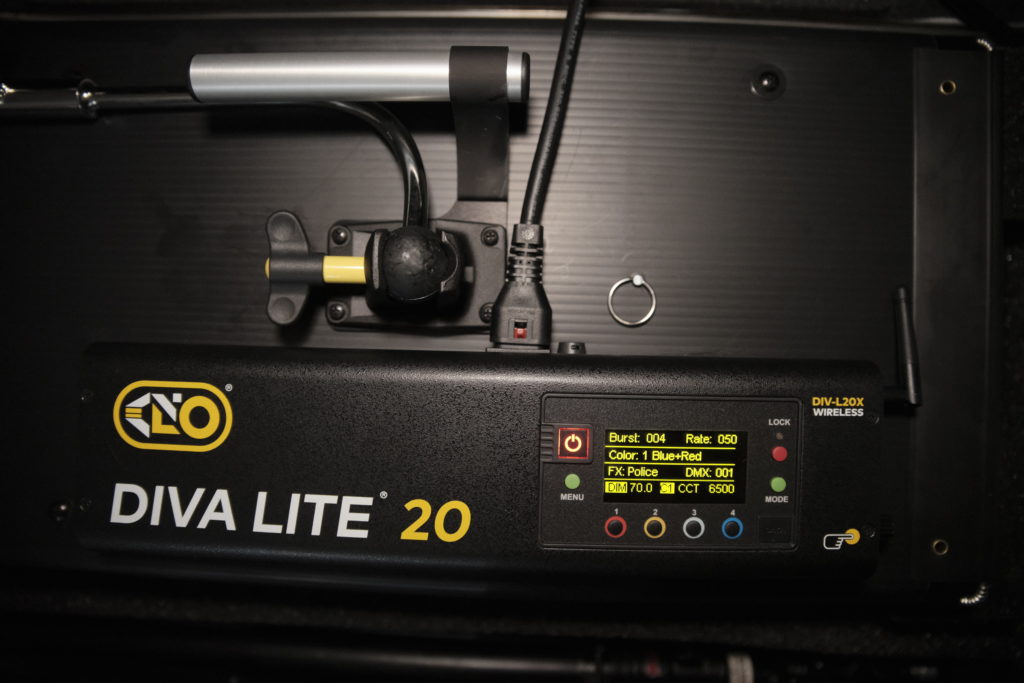
Overall I really can’t recommend these Kino Flo LED fixtures enough, Diva or otherwise. I’ve used them on dozens of shoots, rented them out plenty of times, and they’ve always been excellent to me and those who’ve borrowed them. Kino may have been relatively late to the LED party but if it took them that long to hit the absolute perfection that is their offerings, I’m willing to forgive them. The hype train might make more frequent stops at other manufacturers stations, but I’m hoping you’ll give these things a try on your next shoot and see how good they truly are. I’m rarely a fanatic about gear but in a few cases, such as these LED panels, I’m absolutely all-in.
That and my color meter.














